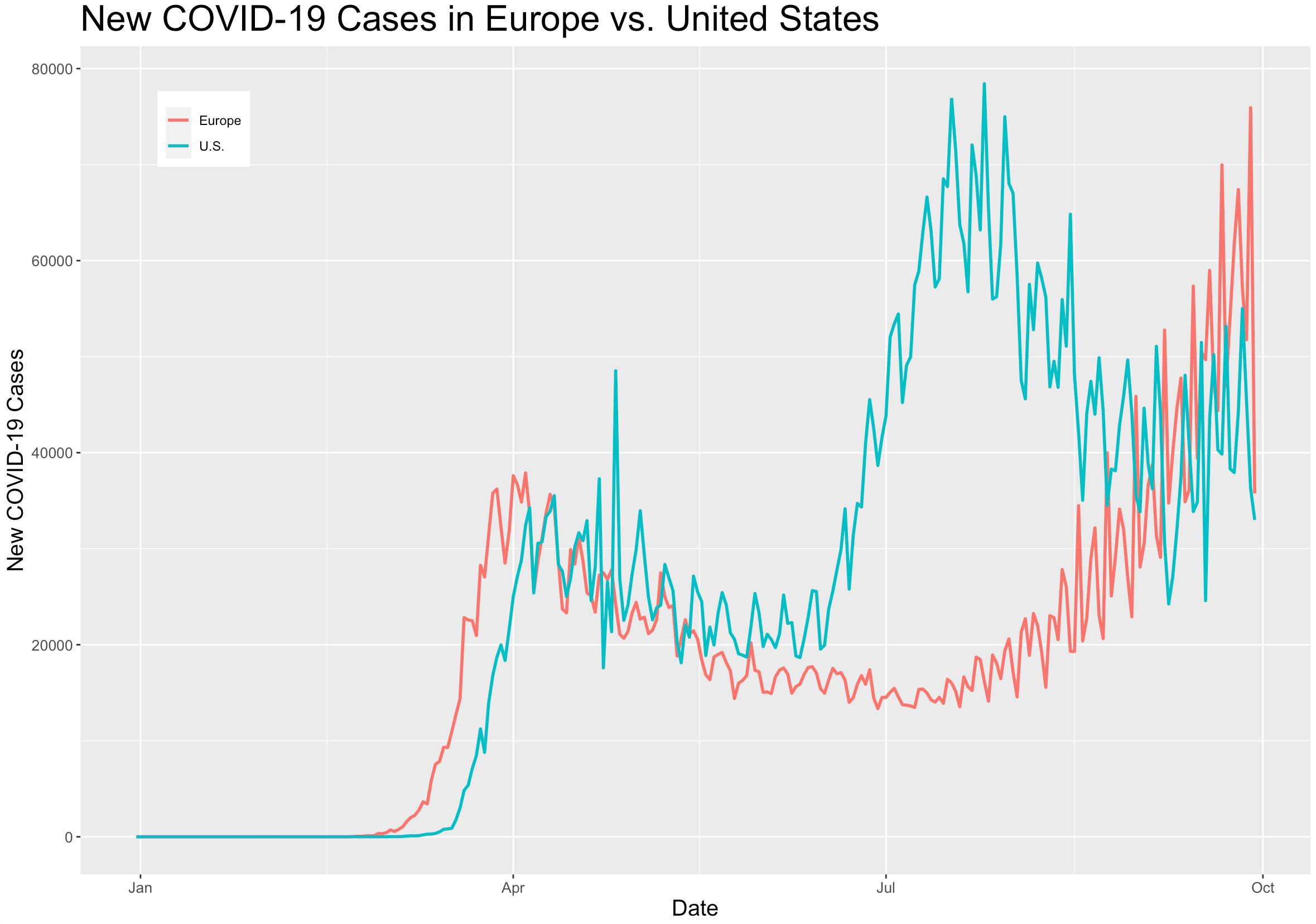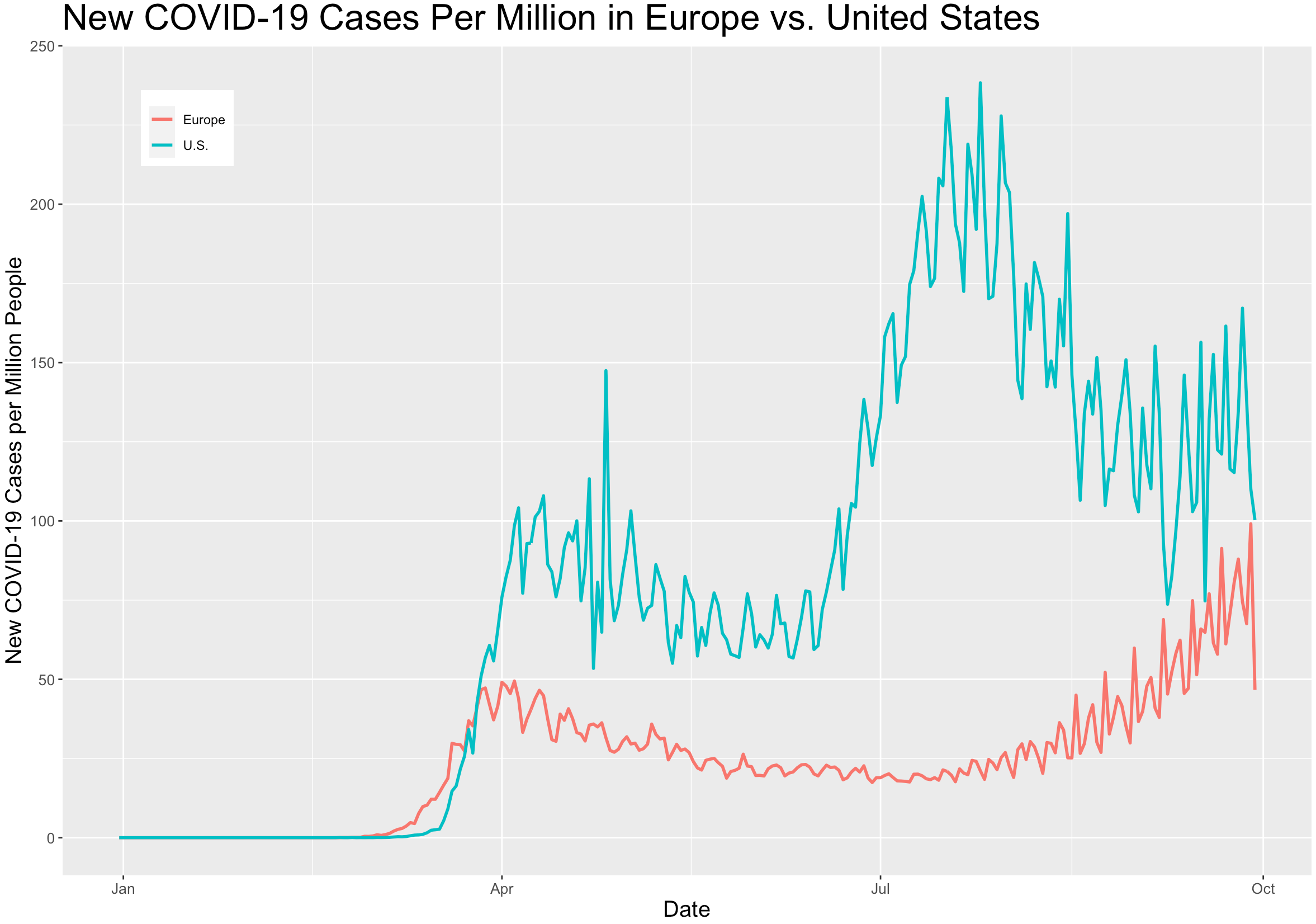By Alex Berezow

After the coronavirus crept out of China earlier this year, Europe became the epicenter of the pandemic. In response, nations across the continent implemented fairly harsh lockdowns. I ended up being trapped in Poland for several months because of the travel restrictions.
For the most part, Europe's crackdown appeared to help. The number of new cases fell during the summer. However, across the pond, the U.S. was in chaos. On July 25, the U.S. hit a record daily high of 78,427 cases. By comparison, Europe recorded only 16,175 the same day. Americans then underwent a period of self-flagellation in which we lamented our failure to control the virus compared to Europe's relative success.
Well, that's all changed now. In the graph below, which I generated using data from the European CDC, the trend in new daily cases has clearly reversed: The U.S. (green line) is trending downward, while Europe (red line) is trending upward.

Just looking at new daily cases is misleading, however. The data set included 54 countries for Europe, which has a combined population of over 766 million. The U.S. population is roughly 330 million. Using this information, we can graph the number of new daily cases per million people.

Even after standardization, the news still isn't good for Europe. Either way the data are examined, Europe is "catching up" to the U.S. in terms of new COVID cases. What went wrong?
A couple of things. The virus is absolutely out of control in some countries, like France and Spain, that previously had tamed the outbreak. In fact, in those countries, the outbreak is far worse now than it was during the peak of the first wave. (By contrast, Germany has largely kept the virus under control following the first wave.)
Tourists and young people are being blamed for the second wave in Europe. It's safe to assume that public complacency also plays a role. The Czechs threw a big "farewell party" for the coronavirus on July 1. The virus is now out of control in that country, as well.
Lessons to Be Learned
It's tempting for Americans to point at Europe and say, "See? Your lockdown didn't work." But that's not really true. The lockdown helped; the problem is that human nature is such that it is difficult to maintain an indefinite lockdown. We're social creatures, and we want to socialize.
There are three lessons, then, to be learned. First, the Swedish epidemiologist who said that lockdowns are essentially delaying the inevitable (i.e., the virus is going to continue spreading until it infects nearly everyone) appears to be correct. He advised that society focus instead on protecting the most vulnerable, which is probably the right policy.
Second, just because America's COVID numbers are decreasing doesn't mean we will be immune to yet another wave. As the weather begins to cool, it is very likely that we will see a surge in cases, perhaps worse than what we experienced during the summer.
Third, we can't wish away infectious diseases. "Out of sight, out of mind" doesn't apply. This is particularly concerning given that we are quickly approaching flu season. We have no idea how overlapping outbreaks of influenza and COVID-19 will play out, but it's possible that we are looking at the prospect of a very deadly autumn and winter, especially if hospitals get overwhelmed.
Unfortunately, we are approaching another season of uncertainty.
No comments:
Post a Comment